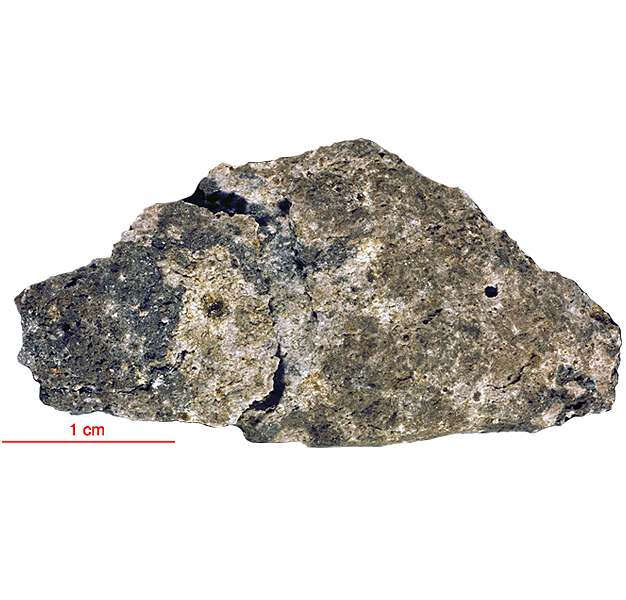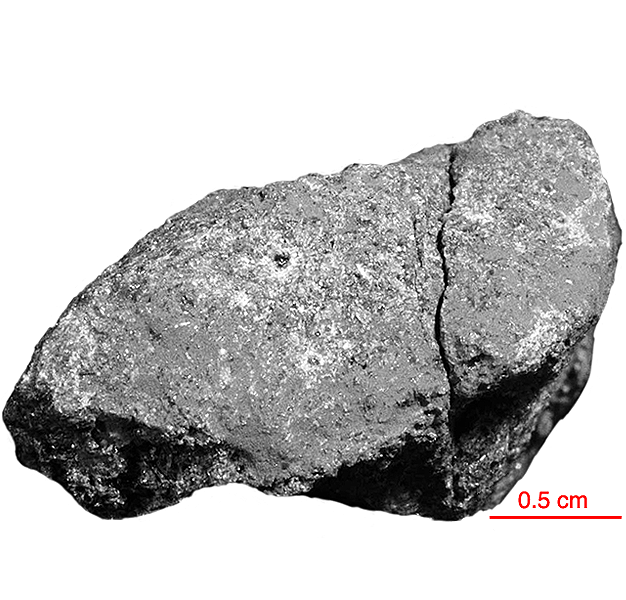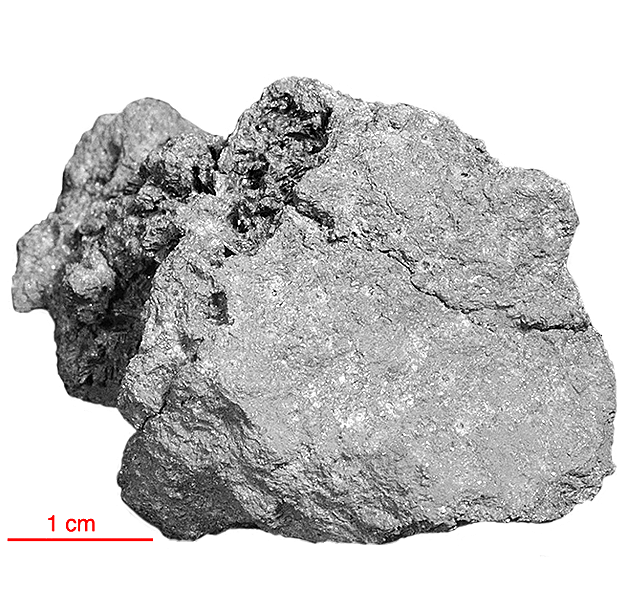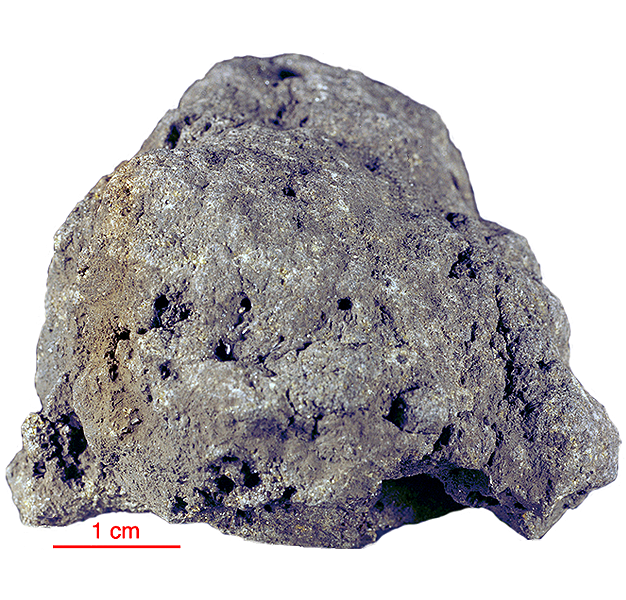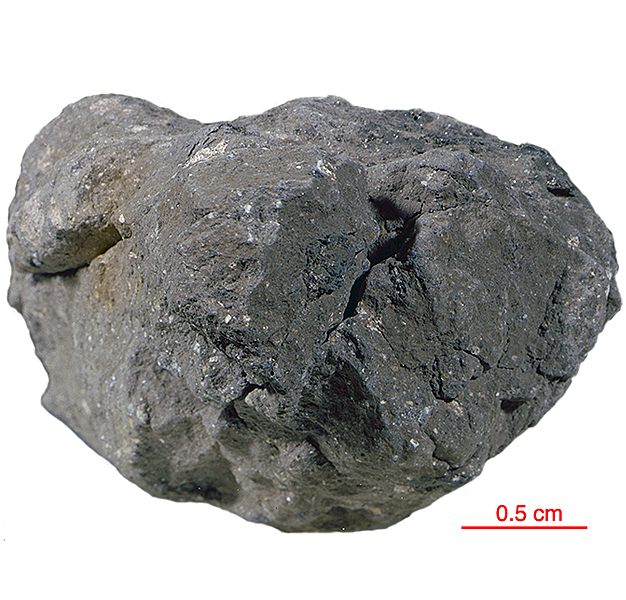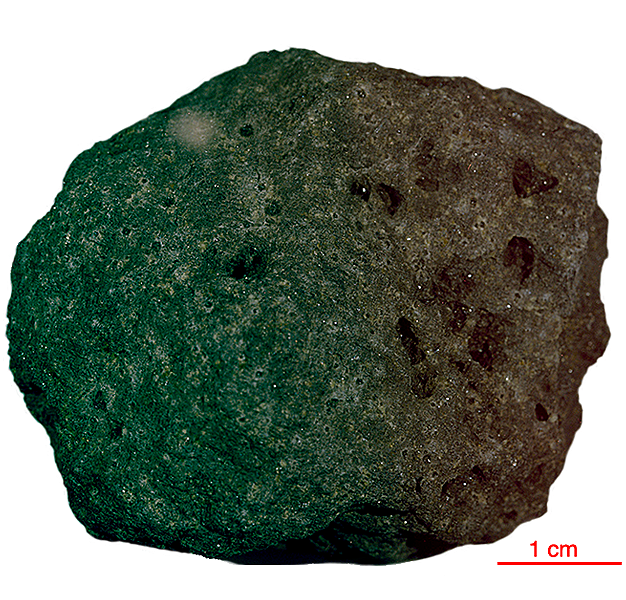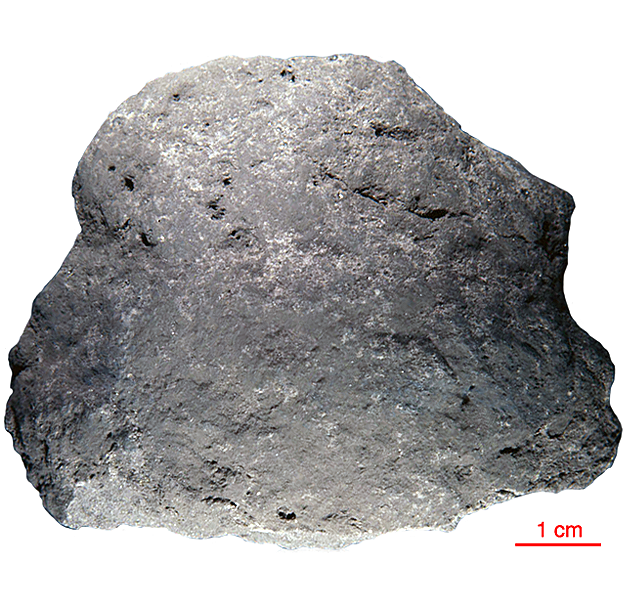
Fact sheet
12004 is a porphyritic olivine basalt with small olivine and pyroxene phenocrysts set in a fine-grained variolitic groundmass. It contains approximately equal amounts of larger clinopyroxene and olivine crystals, from 0.5 mm to several mm in size, which together compose about 40% of the rock. The groundmass (60%) consists chiefly of finer-grained plagioclase and pyroxene with pronounced variolitic textures. Ilmenite, chromite, troilite and metallic iron are the opaque phases.
The sample weighed 585 grams before analysis and has been dated at 2.94±0.11 billion years by one author and 3.29±0.11 billion years by another.
Further details of this and other Apollo samples are here: http://curator.jsc.nasa.gov/lunar/
Apollo 12 returned 34 kilograms of samples, including 45 rocks, samples of lunar 'soil', and several core tubes that included material from as much as 40 centimetres below the lunar surface.
Apollo 12 rocks were almost all basalts, with only two breccias in the returned samples. The basalts at the Apollo 12 site formed 3.1 to 3.3 billion years ago, roughly 500 million years later than the Apollo 11 basalts. Overall, there is much less of the element titanium in the Apollo 12 samples than in the Apollo 11 samples, which explains the more reddish colour of this region. The differences in age and chemical composition between the Apollo 11 and Apollo 12 samples demonstrate that mare volcanism did not occur as a single, Moon-wide melting event.
Apollo 12 was launched on 14 November 1969.

